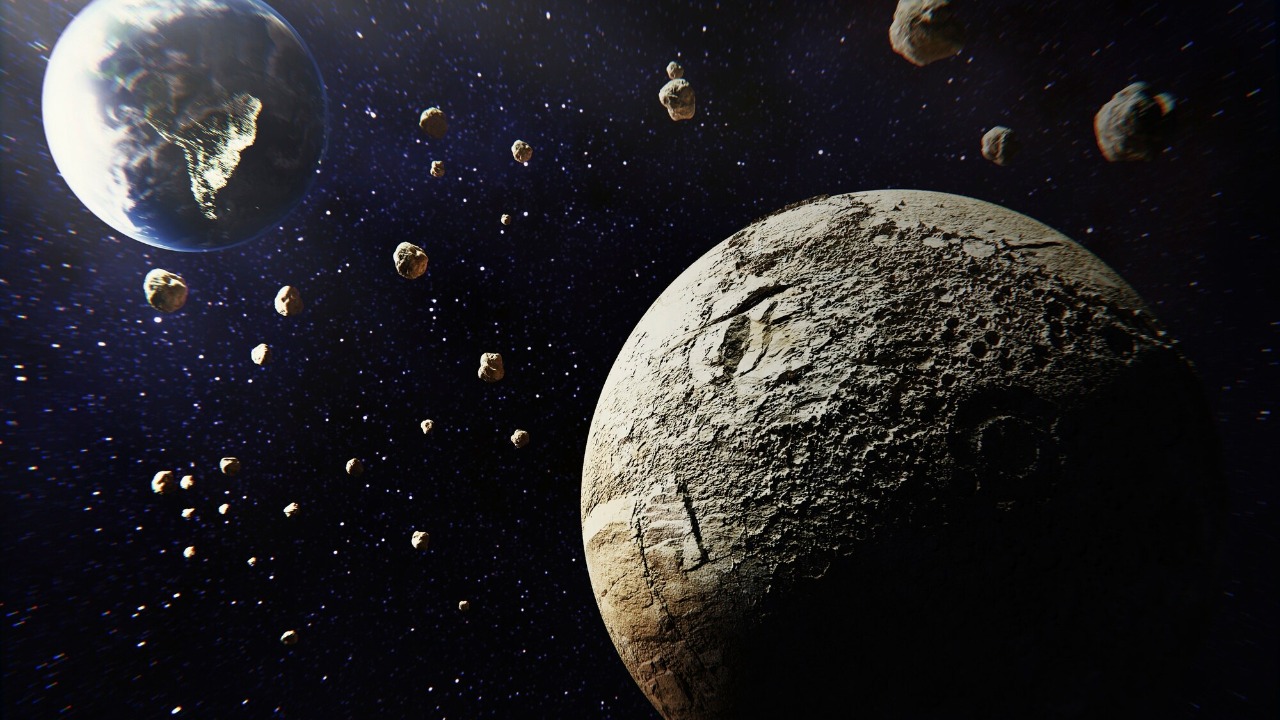
Recent research has shed light on the role of the Moon’s largest impact crater in explaining the stark visual and geological differences between the Moon’s near side, which faces Earth, and its far side. This side of the Moon, characterized by more rugged terrain and fewer dark basaltic plains, has been a subject of intrigue for scientists. The crater, formed billions of years ago, appears to have influenced the distribution of volcanic activity and crustal thickness across the lunar surface.
The Moon’s Largest Impact Crater: Overview
The Moon’s largest impact crater, a colossal basin, stands out due to its immense diameter and depth. This crater is a testament to the violent history of the early solar system, having been formed through a cataclysmic collision. The location of this crater on the far side of the Moon plays a significant role in studies of lunar asymmetry, contributing to the stark contrast between the near and far sides of our celestial neighbor.
The formation of this crater was a monumental event, excavating deep into the lunar mantle and causing a significant redistribution of material. This process likely influenced the distribution of heat-producing elements, which in turn affected subsequent volcanic activity on the Moon. The aftermath of this impact event has left a lasting mark on the lunar surface, influencing global patterns and local geology.
Visual and Geological Differences Between Near and Far Sides
The near side of the Moon is known for its abundance of dark maria, or basaltic plains, a feature that is noticeably lacking on the far side. The far side, in contrast, is characterized by cratered highlands, a testament to its history of significant impact events. This contrast is evident in imagery from lunar missions, which clearly show the difference in terrain between the two sides.
There are also significant differences in crustal thickness between the two sides. The near side’s crust is thinner and has been more volcanically active, as evidenced by seismic and gravitational data. The far side, on the other hand, has a thicker crust and higher elevation, with denser impact features due to limited lava flows post-formation events.
Role of the Impact Crater in Lunar Evolution
The formation of the Moon’s largest impact crater had a profound effect on lunar evolution. The impact event excavated deep into the mantle, potentially redistributing heat-producing elements and affecting subsequent volcanism. Evidence from remote sensing shows mantle material exposure in the crater, which altered local geology and influenced global patterns.
The aftermath of the crater’s formation also led to an uneven distribution of radioactive elements. This drove more melting on the near side of the Moon, contributing to its distinct geological features. The influence of this crater on side-specific evolution is supported by isotopic clues from sample returns from Apollo missions.
Evidence from Recent Lunar Missions and Data
Recent lunar missions and data have provided further evidence of the crater’s influence on lunar evolution. Gravitational mapping from NASA’s GRAIL mission revealed mass anomalies tied to the crater’s structure, indicating its significant impact on the lunar surface. Additionally, spectral analysis from the Chandrayaan-2 orbiter has shown compositional differences originating from the impact event.
Sample returns from Apollo missions have also provided valuable insights. These samples contain isotopic clues that support the theory of the crater’s influence on side-specific evolution. This evidence, combined with data from recent missions, paints a compelling picture of the crater’s role in shaping the Moon as we know it today.
Implications for Understanding the Moon’s Formation
The effects of the crater have significant implications for our understanding of the Moon’s formation. They lend support to theories of the Moon’s origin from a giant impact with Earth, refining models of tidal locking and asymmetry. This discovery challenges prior assumptions about uniform lunar cooling and proposes revised timelines for volcanic activity.
Furthermore, this research opens up the possibility of broader solar system parallels. Similar asymmetries have been observed on other airless bodies like Mercury, suggesting that giant impacts could be a common phenomenon in the solar system.
Future Research Directions
Looking ahead, there are several promising directions for future research. Planned missions like Artemis could target the crater for in-situ analysis to confirm impact-driven asymmetries. Advanced modeling will also be needed to simulate the long-term effects of the impact on lunar interior dynamics.
Moreover, this research has the potential to inform studies of exoplanets. Similar surface dichotomies on these distant worlds might indicate the occurrence of giant impacts, providing valuable insights into their formation and evolution. As we continue to explore the universe, the Moon’s largest impact crater will remain a key piece of the puzzle in understanding the history of our solar system and beyond.